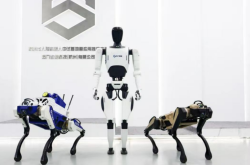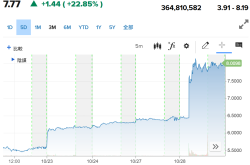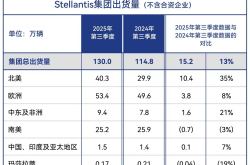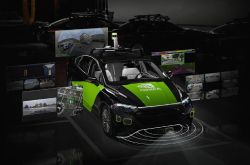Global Intelligent Driving: One Third of the World Market
![]() 10/29 2025
10/29 2025
![]() 543
543
After more than a decade of development, autonomous driving has undergone repeated trial and error in technical routes and survived the ebb and flow of capital. Today, it has entered a new cycle of large-scale mass production, forming two dominant camps: one is the self-developed camp led by Tesla FSD/Google Waymo, defining the current ceiling of intelligent driving; the other is the traditional Tier 1 suppliers represented by Mobileye, which are deeply partnering with global automakers to capture market share in intelligent driving.
In this landscape, whether Chinese intelligent driving can secure a place and claim one-third of the global market has become particularly crucial.
The tech industry offers a cautionary tale: Apple and Qualcomm dominate the end-side AI chip market, while Android and iOS compete fiercely in the operating system market. Imagine if Chinese intelligent driving does not proactively go global and allows the two major camps to continue expanding their global footprint. In that case, it risks repeating the fate experienced in the chip and OS sectors, where it would be forced to play catch-up in the future.

Therefore, the question of whether Chinese intelligent driving should go global is no longer an issue. The real question is: Can domestic intelligent driving challenge the first tier? Who will raise the banner of the third pole in global intelligent driving?
Chinese intelligent driving is about to enter a critical race period. This article analyzes the key points and highlights of this breakthrough battle.
The Key Points Have Emerged
Why and how can Chinese intelligent driving go global now? To understand this, we must look at the broader context of the autonomous driving industry.
Throughout the development of intelligent driving, multiple technical routes have coexisted for a long time. The mainstream approaches include Tesla's vision-only solution and Waymo's fusion perception solution combining high-definition maps and LiDAR.
Driven by large models, there is now a consensus in the industry: end-to-end architecture is the standard for high-level intelligent driving, and the weight of models in the system ("model content") has become a core indicator of technical prowess.
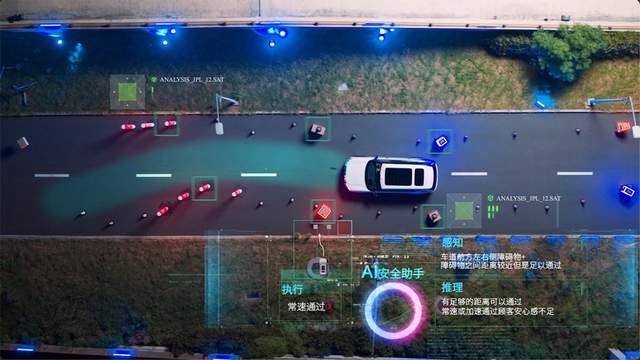
Currently, the high degree of convergence in technical routes means that the global intelligent driving industry has finally ended its chaotic competition over different paths and now has a unified starting line. The industry consensus is: to excel in intelligent driving, one must have a strong end-to-end large model.
This is like a clear technical track, enabling intelligent driving to compete on a level playing field. Many are curious: how does Chinese intelligent driving rank globally—is it a top-tier, mid-tier, or lower-tier contender?
The Strategy of Tian Ji's Horses
In terms of technical parameters alone, Chinese intelligent driving is no inferior. China's research in autonomous driving started relatively early, almost simultaneously with the United States, accumulating vast amounts of road test data and installation volumes. Industry insiders estimate that China leads foreign countries by three years in terms of the speed of automotive intelligence and the development of urban NOA (Navigate on Autopilot).
However, real commercial competition is not about absolute dominance in a single technology; it resembles the strategy of Tian Ji's horses, where structural advantages matter. Just as the iPhone, the world's best-selling phone, is not the one with the highest parameters or the most aggressive hardware stacking.
To understand China's global opportunities in intelligent driving, we must first examine its business model.
A viable intelligent driving solution requires a high degree of hardware-software integration, encompassing complete software algorithms and hardware components such as sensors, LiDAR, domain controllers, and computing chips. This ensures a seamless user experience and future upgradeability. More critically, an intelligent driving system is not a static product that ends upon delivery. It requires continuous safety validation, engineering optimization, and data iteration based on real-world driving conditions.
In other words, to sell an intelligent driving solution to an OEM (Original Equipment Manufacturer), one must deeply partner with automakers, transforming a series of hardware and software solutions into a "turnkey project" and shifting from the traditional supply chain's fast-paced, single-transaction model to providing long-term services.
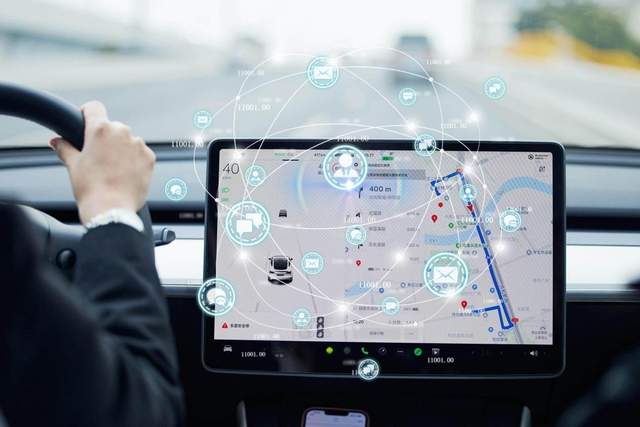
Under this business model, China's real opportunity lies in its structural advantages: Tesla FSD serves only its own vehicle models, while algorithm companies like Mobileye have lighter partnerships with automakers, making it difficult to meet overseas OEMs' preference for turnkey solutions. Traditional suppliers like Bosch are slow to implement end-to-end architectures and lack software innovation compared to emerging players.
Chinese intelligent driving not only meets the stringent technical requirements of high-end automakers, such as BMW's partnership with Huawei's automotive BU and Mercedes-Benz's investment in Qianli Technology, but also forms comprehensive advantages in cost control, full-industry-chain collaboration, and TOB service responsiveness. These are the keys to China's breakthrough in the global market.
Who Are the Dark Horses?
In summary, the global technical foundation for intelligent driving is converging, and the key points of competition have become clearer for the first time. China's breakthrough strategy in intelligent driving is akin to Tian Ji's horses—leveraging structural advantages to become the third pole in the global market. Among the many players, several have the potential to be dark horses, each carrying their own challenges. Three types of contenders show promise in the global market and overseas partnerships:
1. The Tech Giants
Leveraging their deep technical expertise, tech giants have become core players in China's intelligent driving sector. Take Baidu Apollo, for example. As a veteran in domestic intelligent driving, Baidu early on invested in autonomous driving technology and L4-level Robotaxi. It currently operates the largest fleet of driverless taxis in China. In Time magazine's 2025 Best Inventions list, Apollo Go (Baidu), Google Waymo, and Tesla were named the top three global leaders in autonomous driving. However, Baidu's strategic focus has shifted toward large models, and Apollo has long concentrated on L4 technology research. Meanwhile, the mainstream demand in the passenger vehicle market centers on L2.5-L3, causing its intelligent driving solutions to lag in penetration.
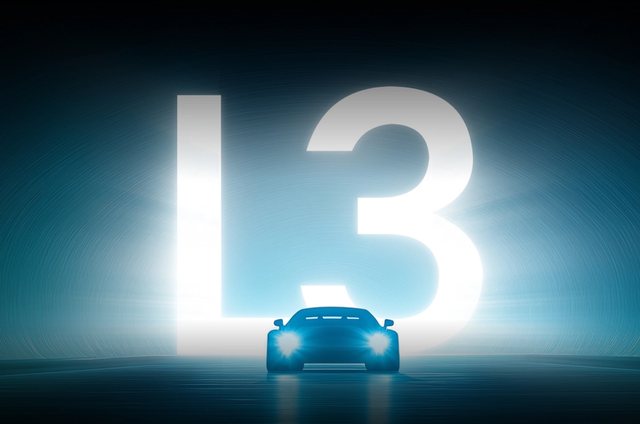
In contrast, Huawei has advanced more rapidly in intelligent driving. With a fully self-developed ecosystem encompassing hardware, in-vehicle OS, and ADS algorithms, Huawei's automotive BU has quickly risen to prominence. Its ADS 3.0 achieves map-free urban NOA, ranking first in the industry for pass rates and smoothness under China's complex road conditions. Through the "Huawei Inside" model and smart selection model, Huawei has partnered with Chang'an, GAC, BAIC, Audi, and others, integrating its solutions into the "X Bound" vehicle models. However, industry insiders reveal that overseas automakers' collaborations with Huawei intelligent driving are mostly limited to the domestic market, with underlying concerns about geopolitical risks. Given the high integration of intelligent driving systems with chips, 5G, and cloud services, overseas automakers fear potential geopolitical disruptions, which has slowed Huawei's global supply chain expansion.
2. The Algorithm Specialists
Autonomous driving algorithm companies hold unique technical advantages. However, constrained by ambiguous business models, massive investments, and unclear returns, many algorithm firms collapsed overnight in 2024. Among them, Momenta stands out as an exception, partnering with leading domestic and international automakers and recognized as a "behind-the-scenes driver" in the second half of the intelligence race.
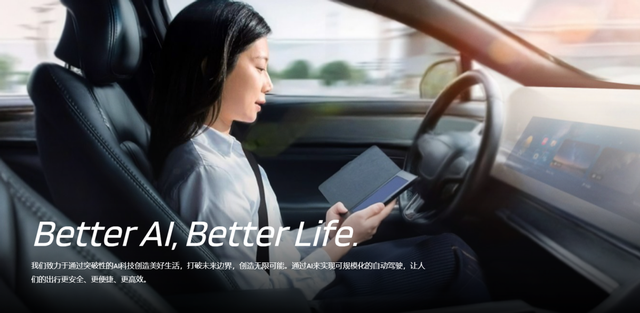
Momenta's global expansion involves vertical technological upgrades, evolving its intelligent driving solutions from L2 to L3 and L4. BMW Group has also chosen Momenta to co-develop China's intelligent driving solutions. Horizontally, it scales by adapting a single main storyline (core strategy) to different clients and vehicle models, accelerating mass production.
However, commercial success in intelligent driving hinges on deep hardware-software integration and long-term delivery, posing challenges for algorithm companies. Momenta's founder has publicly stated that breaking into the automotive industry takes three years of knocking on doors. Establishing contacts and achieving mass production collaborations with joint venture/foreign brands typically requires over two years, sometimes three to four.
Thus, as intelligent driving enters the high-investment, long-cycle arena of end-to-end large model development, cash flow and team stability face pressure, potentially acting as invisible constraints.
3. The Integration Players
A popular joke in the intelligent driving circle describes three current R&D models: Huawei's smart selection vehicles, Momenta's co-research, and automakers' self-development. Are there other approaches? Qianli Intelligent Driving, a new player established just over a year ago, has emerged as a dark horse through a diversified model.
Many first learned of Qianli Intelligent Driving through its "Qianli Navigates 8D Chongqing" real-world challenge. Recently, it demonstrated zero-intervention, smooth performance on Geleshan's sharp bends, Panlong Overpass (one of China's most complex structures), and Jiefangbei's crowded business district (business district), shattering the perception that only Tesla/Huawei could deliver high-level intelligent driving. Further investigation reveals that Qianli Intelligent Driving adopts a non-mainstream R&D model, integrating the strengths of algorithm companies, OEMs, and intelligent driving teams. It inherits Megvii's AI vision expertise, ensuring an 85% "model content" for high-level intelligent driving experiences, and carries over Geely's (Zeekr's) mass production expertise. Simultaneously, Qianli Intelligent Driving employs an open model, unbound to a single automaker, model, or chip, helping to alleviate overseas OEMs' concerns. Leveraging Geely's global experience and networks, Qianli Intelligent Driving can effectively navigate localization challenges in its global expansion.
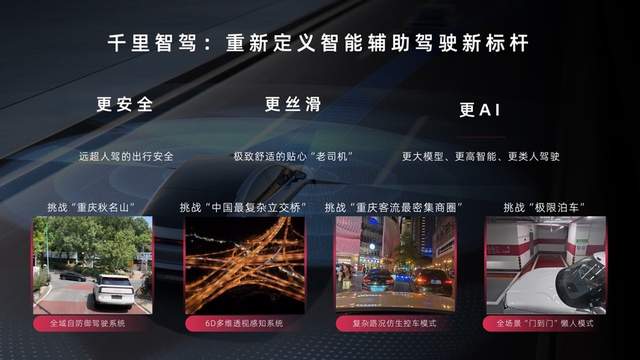
Of course, Qianli Intelligent Driving faces significant challenges. Its market recognition still lags behind first-tier players like Huawei, Bosch, Mobileye, and Momenta, requiring continuous proof of capability through vehicle integrations. As a Tier 1 supplier, it must also strengthen its independence to reassure global clients of its neutrality.
Overall, China has several strong contenders in the global intelligent driving arena, but ultimate victory may not rest on a single player.
Different players occupy various ecological niches: Huawei Intelligent Driving breaks into the high-end market and supplies luxury vehicle chains, Momenta accelerates overseas solution deployments with its first-mover advantage and data flywheel, and Qianli Intelligent Driving hitches a ride on Geely's mass production vehicles for global expansion. By securing positions in different market segments, China's intelligent driving will not only inevitably become the third global pole but also do so faster than expected.
The Invisible Hurdles
The domestic intelligent driving market is already fiercely competitive. Restrictions on promoting L3-level high-level intelligent driving and the deactivation of certain core features have directly weakened C-end users' willingness to pay for software. Meanwhile, automakers' strategies of offering lifetime free intelligent driving to capture market share have further compressed margins for solution providers. In this context, going global is the only way for intelligent driving solution providers to sustain the high investments required for end-to-end large model development.
The value of going global for intelligent driving lies partly in profitability. Overseas markets have mature software payment ecosystems, with European and North American car owners willing to pay for high-level features, offering substantial profit margins for intelligent driving solutions. Additionally, going global allows bypassing trade barriers faced by domestic electric vehicle exports by relying solely on technical solutions to open global doors.

More importantly, it holds strategic significance.
If Chinese companies remain absent for an extended period, global standards for L3 liability and V2X protocols may be dominated by overseas enterprises, reducing China to a follower. Once such a global intelligent driving supply chain takes shape, future entry into the high-end market will become impossible. Only by going global can China drive its laser radar, chip, and other domestic supply chains onto the world stage, systematically gaining industry influence through cross-domain patents and standards.
At the dawn of the automotive intelligence wave, integrating Chinese intelligent driving into the DNA of automobiles represents an invisible hurdle. This endeavor promises not just commercial success for a few companies but a qualitative leap for China's automotive industry from manufacturing exports to technology exports.




